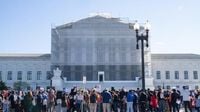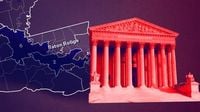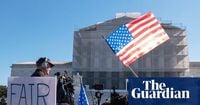On October 15, 2025, the United States Supreme Court convened for oral arguments in a case that could fundamentally alter the nation’s electoral landscape and the protections offered by the Voting Rights Act of 1965. The case, Louisiana v. Callais, centers on Section 2 of the Voting Rights Act, a provision created to enforce the 15th Amendment’s ban on racial discrimination in voting. The outcome could determine not only the fate of the law’s most powerful remaining safeguard against racial gerrymandering, but also the political balance of power in Congress for years to come.
The session, originally scheduled for just an hour, stretched to more than two and a half hours—a testament to the gravity and complexity of the issues at play. According to the BBC, the nine justices engaged in a rigorous back-and-forth with the attorneys, probing the limits and implications of Section 2. As the dust settled, many observers sensed that a majority of the Court was open to a dramatic reinterpretation, or even outright elimination, of the law’s requirement that states consider race when drawing congressional districts.
The origins of this high-stakes legal battle are rooted in a lawsuit brought by Black voters in Louisiana. They contend that the state’s congressional map, which currently includes just one majority-Black district out of six, fails to reflect the reality that Black residents make up approximately 31% of the state’s population. The plaintiffs argue that a second majority-Black district is not only fair, but necessary to ensure their voices are adequately represented in Washington.
Section 2 of the Voting Rights Act has, for decades, been interpreted by the Supreme Court to require states to create “opportunity districts” that allow sizable minority populations to elect representatives in proportion to their share of the population. This provision has been a cornerstone of efforts to diversify political leadership across the South, and its impact has been particularly significant in states like Louisiana, where, as counsel for the Black voters reminded the Court, “no Black candidate has been elected to statewide office since Reconstruction.”
But the challenge before the Court is not simply about the composition of Louisiana’s congressional districts. Over the summer, the Court’s conservative majority signaled a willingness to revisit whether Section 2 itself is constitutional, given that it requires states to take race into account when drawing districts. In a dramatic shift, Louisiana’s Republican officials—who had previously defended their legislative map as compliant with the Voting Rights Act—joined forces with the Trump administration to ask the Court to do away with the law’s race-conscious requirements entirely. As reported by Democracy Docket, this move was seen as part of a broader effort by red states to lock in a GOP advantage in Congress through aggressive redistricting.
During oral arguments, Janai Nelson, representing the Black Louisiana voters, warned the Court of the potentially devastating consequences of gutting Section 2. “If you take Louisiana as an example, every member who is Black was elected from an opportunity district,” she told the justices. “Every justice in Louisiana has been elected through a VRA opportunity district and nearly all legislative representatives elected through VRA opportunity districts.” She cautioned that weakening or eliminating Section 2 would lead to a resurgence of racial discrimination in redistricting, undoing decades of progress. “It is an intervention that has been crucial to diversifying leadership and providing an ability of minority voters to have an equal opportunity to participate in the process.”
Louisiana’s Solicitor General, J. Benjamin Aguiñaga, pushed back forcefully, dismissing concerns about a return to widespread discrimination as “sky is falling” rhetoric. He argued that requiring states to consider race when drawing legislative lines amounts to “government-mandated racial balancing,” a practice he claimed the Constitution does not tolerate. This line of reasoning echoed the Court’s recent decision striking down race-conscious admissions policies at Harvard University, and it resonated with several members of the conservative majority.
Throughout the arguments, Justices Brett Kavanaugh and Amy Coney Barrett appeared particularly interested in the question of whether Section 2’s remedies can last indefinitely. Kavanaugh, who has previously suggested that race-conscious remedies should be time-limited, asked pointedly, “What is the time limit for the end of the framework for the use of race in VRA Section 2?” Barrett echoed this concern, pressing for clarity on how long such remedies should remain in place.
Justice Samuel Alito seemed ready to significantly narrow Section 2, focusing on the technicalities of the legal framework developed in previous cases such as Gingles and Milligan. Justice Clarence Thomas, meanwhile, appeared preoccupied with procedural questions, suggesting he might be interested in overturning the remedial map entirely. While Chief Justice John Roberts and Justice Neil Gorsuch’s leanings were less clear, Gorsuch expressed skepticism about further narrowing the statute, and Roberts probed for a possible middle ground that might appease both sides.
The Justice Department, for its part, maintained that it was not seeking to eliminate Section 2, but rather to clarify the standards used to evaluate claims under the law. Principal Deputy Solicitor General Hashim Mooppan argued for a “clarification” of the Gingles framework, but some justices seemed unconvinced that this would address the underlying issues of discriminatory effects and ongoing residential segregation—a legacy of Louisiana’s history of slavery and Jim Crow laws, as Justice Ketanji Brown Jackson noted.
The stakes of the case are enormous. As BBC and Democracy Docket both report, a decision to weaken or strike down Section 2 could unleash a wave of redistricting across the South, potentially flipping more than a dozen congressional seats from Democratic to Republican. With the House of Representatives currently divided by a razor-thin margin, such a shift could hand President Donald Trump’s party a decisive advantage in the next midterm elections. More broadly, the case raises profound questions about the future of American democracy and the nation’s commitment to protecting the voting rights of minority citizens.
As the oral arguments drew to a close, the sense among court watchers was that the conservative majority appeared poised to at least substantially pare back the current requirements of Section 2, if not do away with them entirely. “The strong evidence from the argument is that they are siding with the state of Louisiana,” Harvard Law Professor Guy-Uriel Charles told the BBC. Still, the final decision is not expected for several months, and the justices’ ultimate reasoning—and its impact on the political map—remains to be seen.
The Supreme Court’s ruling in Louisiana v. Callais could mark a turning point in the ongoing struggle over voting rights in America. For now, all eyes remain fixed on the high court, awaiting a decision that could reverberate through every level of the nation’s political system.


